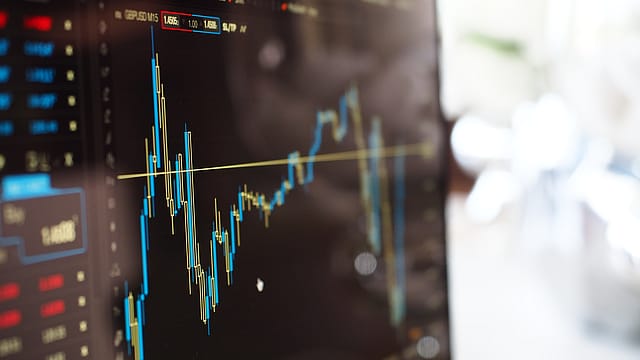Markets end in the red after showing signs of recovery
ADVERTISEMENT

Following last week’s Black Friday when the S&P BSE Sensex and NSE’s Nifty 50 ended the day’s trade shedding over 1,448 points and 458 points respectively, the trade pattern through most of Monday gave hopes that the bulls were back. However, in the 30 minutes to the end of the day’s trade, the bourses shed their gains after the government confirmed that two new coronavirus cases were detected, one each in Delhi and Telangana.
At the end of the day’s trade, the Sensex closed at 38,144.02, -0.40% lower than the previous day’s close; the Nifty 50 at 11,132.75, 0.62% lower.
Earlier in the day, the Indian markets had outperformed global peers due to lower crude oil prices and no addition in Coronavirus cases in India. The Sensex, at day’s high at 39,083.17 points had gained over 785 points (+2.05%) over its previous day’s close; Nifty 50, over 231 points (+2.06%) to touch the day’s high of 11,433 points.
This was a blessing for the much-hyped mega initial public offering (IPO) of SBI Cards and Payment Services (SBI Cards), which opened for subscription on Monday in the price range of ₹750–₹755 a share. According to data from the National Stock Exchange (NSE), at 5 p.m. on Monday, SBI Cards received total bids for over 3.94 crore against its total issue size of over 10.02 crore shares.
December 2025
The annual Fortune 500 India list, the definitive compendium of corporate performance, is out. This year, the cumulative revenue of the Fortune 500 India companies has breached $2 trillion for the first time. Plus, find out which are the Best B-schools in India.
On Day 1, the issue saw subscription of 0.39 times (39%). The fate of SBI Cards’ IPO was under thick clouds, says an investment banker who is not associated with the IPO, following the 7% fall in the benchmark indices in the week gone by. Thanks to the better than expected performance, till 3 p.m. market sentiment was positive.
It turned bad after the government confirmed two new coronavirus cases in the country, one in Delhi and the other in Telangana. The Sensex and the Nifty 50 shed 511 points and 165 points respectively to touch the day’s low of 37,785.99 points and 11,036.25 points in the 30 minutes to end of trade. The S&P BSE MidCap and S&P BSE SmallCap lost over 175 points and 163 points over the previous close to record day’s low of 14,424.43 points and 13,545.81 points respectively—this was after it had seen 337-point- and 287-point-jumps to touch the day’s high of 14,938.01 and 13,996.37.
According to the World Heal Organisation (WHO) data, compared to February 29’s 85,403 global confirmed cases of coronavirus, March 1 saw a rise of 1,734 cases (+2.03%). China recorded a rise of 574 new cases, from 79,394 on February 29 to 79,968 on March 1—a 0.72% increase. In comparison, the number of countries with affected cases jumped over from 53 to 58, and the number of cases increased by 1,160 (+19.6%) from 6,009 on February 29 to 7,169 on March 1.
Seeing the stark declines in the indices, both in India and internationally, there are no points for guessing that market sentiment would be dictated with the news and update on the spread of Coronavirus cases. “A prudent approach for investors at this point would be to stick to quality names and invest in a phased manner,” says Ajit Mishra, vice president, research at Religare Broking.
Amit Shah, a technical research analyst with Indiabulls Securities, says, “We continue to maintain (that) the recovery is likely to be shaky and fragile.” In Shah’s view, the Nifty 50 is likely to face stiff resistance near the 11,550 zone. “It’s a classical sell on rise [in] market and bottom fishing should be avoided for any longs,” Shah recommends. Furthermore, Shah opines that 10,900-11,000 is the next support zone on the downside for the Nifty 50. “Severe damage has been done and repair will take considerable time,” Shah adds.
